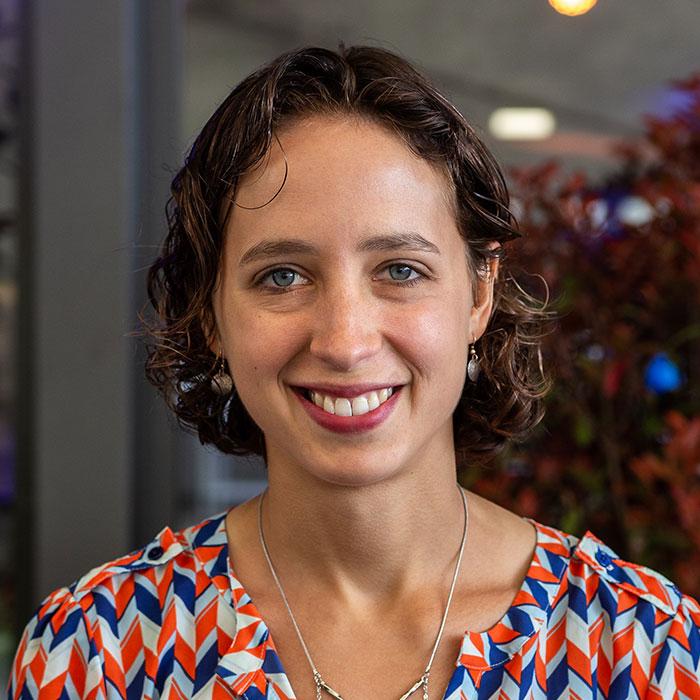
Hannah Safford in St.Gallen, May 2019
Partly due to climate change, water resources are becoming increasingly scarce globally. To combat this pressing issue, relying on existing water supplies is not enough. At some point, we have to find ways to reuse dirty water.
It’s this step—to detect disease-causing contaminants after water treatment—that Hannah Safford
, a Ph.D. student in environmental engineering at University of California—Davis, is focusing on. Specifically, together with her supervisor, Safford is exploring the potential of flow cytometry (a laser-based biotechnology used in medical settings) as a rapid and reliable method for monitoring waterborne viruses. “This is essential because if we’re ever going to achieve widespread recycling of wastewater into drinking water, we need fast and reliable ways to ensure that treatment processes are working as intended to remove all waterborne contaminants,” Hannah explains.
Hannah Safford
, a Ph.D. student in environmental engineering at University of California—Davis, is exploring the potential of a technology called flow cytometry (a laser-based biotechnology used in medical settings) as a rapid and reliable method for monitoring waterborne viruses. “This is essential because if we’re ever going to achieve widespread recycling of wastewater into drinking water, we need fast and reliable ways to ensure that treatment processes are working as intended to remove all waterborne contaminants, including viruses,” Hannah explains.
Safford sees herself as a bridge linking “the science and the policy-making community,” and wants to use her intellectual and technological capital for a purpose: to make sure there is enough clear water to use on our planet.
For-profit companies alone cannot solve this water shortage problem. Although some water treatment businesses have been making profits, most companies in the U.S., where water is cheap, can waste all the water they want without worrying about treating it. “Conserving water was not built in the private sector model,” Hannah says.
According to Safford, in order to tackle large-scale environmental issues, scientists and policy-making bodies have to join hands. This is why Safford worked for two years at the White House Office of Science and Technology Policy (OSTP)—a job she started when she was just 22—while pursuing two master’s degrees at Princeton University.
At OSTP, Hannah co-organized the first-ever White House Water Summit and co-organized a Federal task force. She also played a role in U.S. government’s signing the Paris Agreement on climate change.
The PhD student’s vision of a more sustainable environment goes beyond the U.S. border and water issues. As a teenager, Safford was a senior volunteer for San Francisco Zoo for six years. While still an undergraduate in chemical engineering at Princeton, Hannah travelled to Kenya, conducting research on water flows in the savannah. After her work at OSTP, she served as an advisor for lawmakers on a statewide solar plan in New Jersey. Now, she is active at the UC Davis Policy Institute and serves on City of Davis Natural Resources Commission.
Safford says ordinary people can also contribute to a more sustainable environment. “You can show up to your city council meeting and you can provide comments about what issues you care about,” she says. “When people are asking for volunteers, you can step up and do that. It’s amazing to me how many opportunities there actually are for people to get involved in policy processes and how few people take advantage.”
Last modified on 2022-01-02